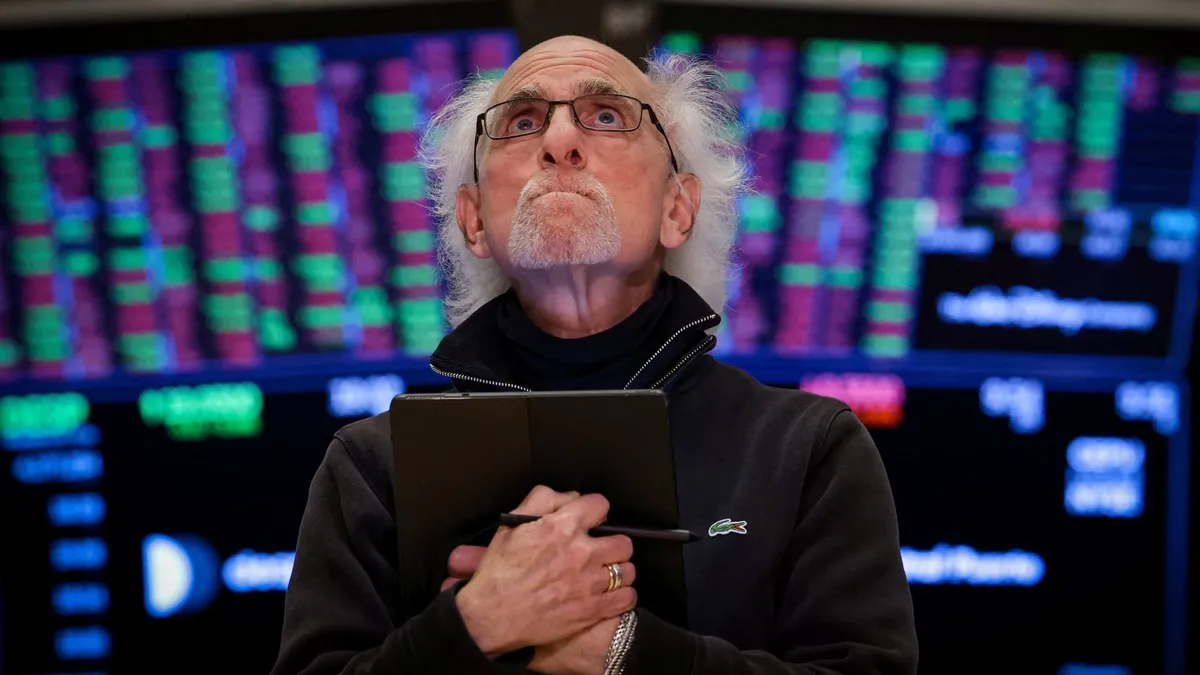
Stock futures experienced a notable uptick on Monday evening, with the S&P 500 witnessing extended losses for the third consecutive day following President Donald Trump's tariff rollout. Futures associated with the S&P 500 were up by 0.9%, while Nasdaq-100 futures surged approximately 1%. Moreover, Dow futures saw a significant increase, jumping 444 points, or nearly 1.2%. These movements came in the wake of another tumultuous trading day on Wall Street, which recorded the highest trading volume in nearly 18 years, with around 29 billion shares changing hands.
The 30-stock Dow Jones Industrial Average fell by 349 points, or 0.9%, after earlier in the session experiencing a staggering plunge of more than 1,700 points. Throughout the day, the index demonstrated extreme volatility, swinging a total of 2,595 points between its highs and lows. The S&P 500 ended the day down 0.2%, having previously dipped by as much as 4.7% at its lowest point. Despite finishing more than 17% below its 52-week high, the index briefly entered bear market territory during the trading session.
The Nasdaq Composite managed a slight recovery, ticking up 0.1%, as investors capitalized on buying opportunities in key megacap technology stocks like Nvidia and Palantir. At one stage, the tech-heavy index had fallen over 5% from its session high before rebounding. An intriguing moment during Monday's session occurred when stocks surged into positive territory following speculation on social media about a potential pause in tariffs. However, the White House later dismissed these claims as "fake news," causing the indexes to retract their gains.
In an interview with Fox News, Treasury Secretary Scott Bessent indicated that tariff negotiations with various countries might extend until June. He noted that nearly 70 countries, including Japan, have reached out to the White House regarding tariff discussions. Meanwhile, the benchmark 10-year Treasury yield climbed above the 4% mark, even as Trump's tariffs intensified concerns over a potential recession looming over the U.S. economy.
Market analyst Louis Navellier, founder and chief investment officer of Navellier & Associates, suggested that the storm may be subsiding, potentially aided by the misleading report of tariff easing. He stated that the rising Treasury yields indicate that recession fears might have been exaggerated, along with the possibility that the Federal Reserve may not resort to emergency cuts. Navellier also implied that Trump’s tariff strategy might not be as detrimental as critics have predicted.
Despite these insights, it is essential to note that the S&P 500 has experienced a decline of more than 10% over the past three trading sessions. The CBOE Volatility Index—often referred to as Wall Street's fear gauge—spiked to approximately 60 on Monday, highlighting the market's heightened anxiety.
On the economic calendar for Tuesday, the National Federation of Independent Business (NFIB) is set to release its small business index reading for March. Additionally, later in the week, the highly anticipated consumer price index report will be published, providing further insight into inflationary trends and their impact on the economy.